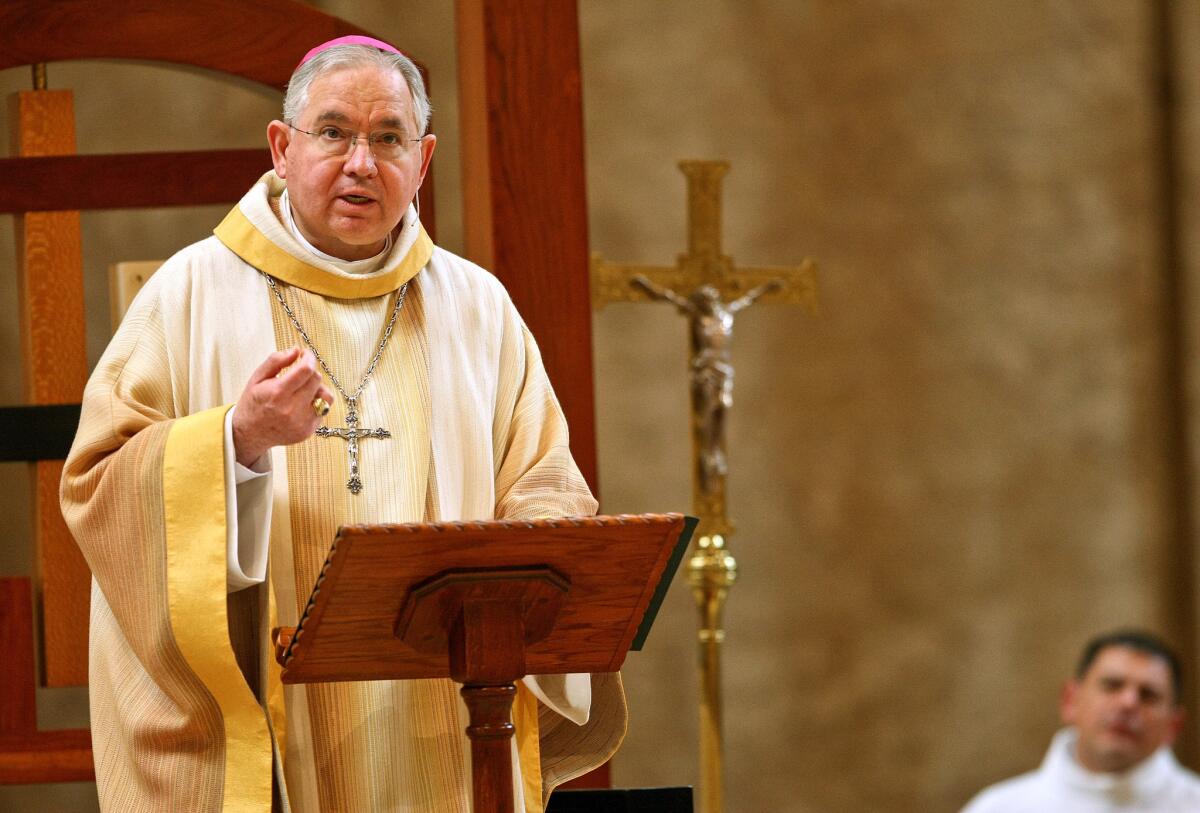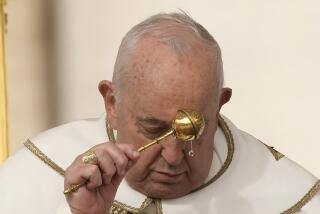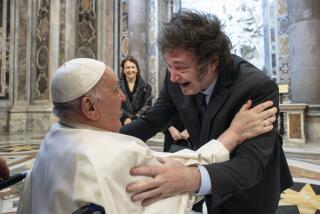Vatican social media guru: Catholics should give Internet ‘a soul’

The Pope’s social media expert said Wednesday that Catholics should be using social media to make the atmosphere online a positive place where people can deepen their relationships with one another.
Monsignor Paul Tighe, the secretary to the Pontifical Council for Social Communications of the Vatican, told an audience of Catholic educators, clergy and staff at an Archdiocese of Los Angeles technology conference that “the digital world is reality,” not a fad. He said Catholics need to be part of that world.
“If the church in some way is not present in the digital, we’re going to be absent from the experience and from the lives of many people,” Tighe said. “If we withdraw, then we’re leaving those areas to the trolls. We’re leaving it to the bullies.”
The Irish-born priest, who was appointed a senior media advisor to the Vatican in 2007, was the keynote speaker at the 3rd annual Catholic Communication Collaboration Technology Conference. The four-day event at Loyola Marymount University features 40 workshops providing representatives from schools and parishes in the archdiocese with technology training and information.
“Integrating technology and understanding the digital ‘landscape’ is new mission territory for the church,” Archbishop Jose Gomez said last week in a prepared statement about the conference. “Our task is to understand these resources better and find ways to create what Pope Francis calls ‘a culture of encounter’ in this digital space.”
The Catholic Church, which is built on more than 2,000 years of tradition and has been criticized by some as having old-fashioned views, made a notable entry into the digital world in December 2012. That’s when its leader -- then Pope Benedict XVI -- posted his first message to the microblogging site Twitter under the handle @Pontifex.
The Twitter account and its eight other language-specific versions now have a total of nearly 15 million followers. But despite being digital, Tighe said the church still has some “magic” in its traditional communications.
“We still do smoke signals,” he said, showing the audience an image of white smoke rising from the chimney of the Sistine Chapel at the Vatican, the sign that a new pope has been elected. “We could have tweeted it. The magic is this…. It’s the art, it’s the beauty.”
Despite its traditions, Tighe said the church also needs innovation.
“You can’t just do what you’ve always done,” he said.
Tighe also provided guidance for the use of social media for what he said Pope Benedict called “giving the Internet a soul.” He said it’s not about selling something, manipulating people or merely broadcasting information, but about engaging in conversation and valuing others regardless of their beliefs.
Tighe said his position gives him an opportunity to see what others are doing in communications around the world. He offered some tips on how to engage the digital culture:
- Be respectful, honest and objective. Tighe said that authenticity and consistency are keys to engaging others online.
- Seek out and collaborate with the “good Samaritans,” those who are using social media positively, even if they’re not people of faith.
- You don’t have to always create new content. It’s OK to simply share what’s already there.
- Experiment with various online platforms. Tighe repeated advice he said he read in the Economist: “Be promiscuous, but don’t marry any of them.”
David Moore, director of telecommunications for the archdiocese, thanked Tighe for his visit and for participating in the conference.
“I think we can rest assured that there’s a lot more going on in the Vatican in communication than smoke from a chimney,” Moore said.
Twitter: @chadgarland






